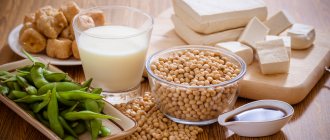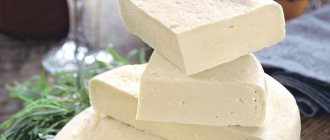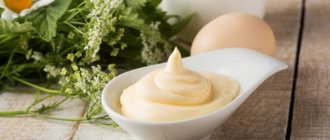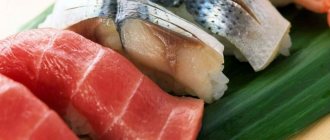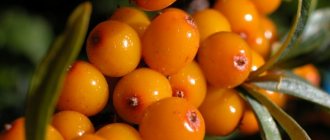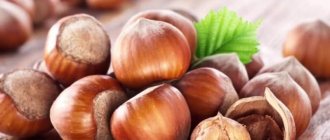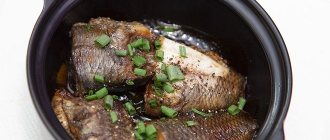Asparagus, also called asparagus, is one of the most useful and elite vegetable crops. An adult plant is a shrub about 1.5 m high and is often used as a decorative element in landscape design. Only young succulent shoots no longer than 20 centimeters are eaten. Some species of this plant are actively used in pharmacy.
CALCULATORS FOR THOSE WHO WANT TO LOSE WEIGHT
Composition (bju)
The beneficial properties of asparagus are determined by its composition. Per one hundred grams of this product in its raw form there are 4.5 g of proteins, about 6 g of carbohydrates and only 0.2 g of fat. It also contains saponins, organic acids, coumarins, a large amount of potassium, carotene, vitamins A, B, C, E, K and many other elements.
With such a complex of useful substances, asparagus has a truly unique set of beneficial properties and has a positive effect on the entire body as a whole. It is not surprising that the scientific minds of Ancient Egypt studied asparagus.
Of the three types of edible asparagus (white, green and purple), the most healthy and rich in vitamins is green.
Calorie content
Asparagus, along with rhubarb and celery, is the leader in low calorie content. Its indicator for one hundred grams of raw or steamed vegetables is only 20 kcal. The figure for pickled green asparagus is slightly lower - 15 kcal per 100 grams of product.
Asparagus can reach its peak calorie content only when frying it in oil - about 75 kcal per 100 grams of product.
You can often find soy asparagus in markets and stores. This product is not related to asparagus as such and is the result of processing soybeans. The calorie content of this product is about 50 kcal per 100 g. However, soy asparagus in its pure form is less common than in Korean-marinated form. This dish is called fuzhu and it is very high in calories due to the addition of seasonings, butter and sugar - about 200 kcal per 100 g.
Korean asparagus recipe
To prepare Korean asparagus, you will need one hundred grams of dry soy asparagus, one small clove of garlic, a small amount of soy sauce and vegetable oil, a little seasoning and pepper sauce.
Dry asparagus (soybean semi-finished product) should be poured with boiling water and allowed to brew for about an hour. At the same time, fry the onion, cut into half rings, in vegetable oil in a heated frying pan. Add pepper sauce, chopped garlic, one tablespoon of soy sauce, and fry everything thoroughly.
Then add all the ingredients to the asparagus, straining the product from the water in advance. After this, add seasoning and let the dish cool.
Due to its low calorie content, Korean asparagus can be used in dietary nutrition. Fresh garlic lowers cholesterol, lowers blood pressure, and improves immunity. Onions contained in soy asparagus reduce swelling, stimulate appetite, and stimulate peristalsis.
Beneficial features
Each of the elements and vitamins contained in asparagus has a beneficial effect on the body, such as:
- Vitamins A, C, E, K, as well as microelements such as iron, fiber, potassium, selenium and others ensure the proper functioning of the body at the cellular level;
- Coumarins – improve the performance of the heart muscle, prevent the formation of blood clots by improving blood circulation;
- Saponins have a double effect - they clear the bronchi of phlegm in the presence of respiratory diseases and cleanse the body of waste and toxins, as it has a diuretic function;
- Aspartic acid improves metabolism and generally has a positive effect on the functioning of all organs;
- Carotene affects the production of melanin, protects the body from exposure to sunlight and from burns, strengthening and saturating cell membranes;
- Calcium sulfate is an element necessary for the synthesis of collagen and keratin, thus it is directly involved in the creation of structural protein - the basis of any skin and hair cell;
- Vitamin PP and folic acid preserve youth and elasticity of the skin and fight the appearance of wrinkles.
This is a basic, but far from complete list of all the beneficial properties of asparagus. Undoubtedly, consuming this vegetable helps to quickly get rid of excess weight while losing weight without compromising your health, due to the energy value and low calorie content of asparagus.
Vitamin content
table 2
| Vitamins | Content | Daily norm |
| C (ascorbic acid) | 20.8 mg | 29.7 % |
| A (retinol) | 86.03 mcg | 8.6 % |
| E (α-, β-, γ-tocopherols) | 2.63 mg | 26.3 % |
| B1 (thiamine) | 0.1 mg | 6.9 % |
| B2 (riboflavin) | 0.1 mg | 5.8 % |
| B3 (PP) (nicotinamide) | 1.46 mg | 7.7 % |
| B4 (choline) | 16.63 mg | 3.3 % |
| B6 (pyridoxine) | 0.1 mcg | 4.8 % |
| B9 (folacin) | 53.9 mcg | 27 % |
Roasted asparagus contains high, medium, and low levels of vitamins when measured according to the food's nutritional significance standards.
At the highest level of importance in the food value chain are:
- C, takes part in the redox processes of the body, raises the tone of the body, strengthens the immune system.
- E, keeps the muscular system in good shape.
- B9, supports the hematopoietic and digestive system.
Vitamins at a medium level of importance include:
- A, takes part in all functions of the body related to its growth and proper metabolism, preserves the structure of the cornea of the eye.
- B1, required to normalize the nervous and muscular systems.
- B2, maintains body tone.
- PP, participates in the formation of hemoglobin.
Vitamins of low content include:
- B4, is involved in the biosynthesis of heme and proteins, cell proliferation, and tissue respiration.
- B6, participates in the metabolism of lipids and amino acids.
How to select and store
The first thing to remember when choosing a vegetable is that asparagus is young shoots . Any sign of stem germination (opened scales at the tip, the presence of arrows with seeds) is a clear signal that you should refrain from purchasing.
Asparagus is sold in bunches or in containers wrapped in cling film. In the second case, the choice should be treated more carefully, since the packaging features will not allow you to properly examine the product. In this case, the main sign of a stale product will be a large amount of condensation inside the package.
Signs of good asparagus include:
- Rich, even color without any spots or inclusions;
- No foreign odors (the odor of the product itself is neutral);
- Dense round stem;
- Smooth, slightly weathered cut with no signs of drying.
You should not buy asparagus stalks that are too thin - they may be unripe and have a pronounced herbaceous taste. If the cut of the stem shows internal fibrousness, then this is a clear sign of an old product.
Long-term storage of asparagus, like any other vegetable, can lead to the loss of its beneficial properties and deterioration in taste. The optimal storage period is no more than three days.
- You can put the product in the refrigerator with other vegetables and pack it not in a bag, but in a cloth.
- The second method is similar to the techniques used by florists for preserving flower arrangements: the stems need to be recut, then place the bunch in water and put the whole thing in the refrigerator.
Long-term storage of asparagus (for a week) is possible in the freezer, but it will taste less pleasant than fresh shoots.
Application
Juice made from fresh asparagus with green apples and carrots is popular in vegetarian cuisine. To preserve minerals, the plant is best steamed. To prepare asparagus, it is better to use enamel rather than iron utensils, since the tannins contained in the plant react with iron and discolor the sprouts.
Thin stems do not need to be peeled, unlike thick stems, which have a tougher top layer. It is better to cook asparagus whole and cut it into pieces after cooking. As a rule, asparagus is cooked as follows: the stems are tied into a bunch and dipped in salted water, so that the top of the plant remains above the water. Cooking time 3-8 minutes, depending on thickness. Peeled asparagus takes the least amount of time to cook. The base is tougher than the top, and with this preparation the base becomes more tender, and the top does not have time to soften.
Asparagus stalks are fried, stewed, baked, mashed, canned, and added to various dough products and omelettes. Asparagus goes well with any dish - meat, fish or vegetables.
Market Analytics
- Global cosmetics market 2021: an unprecedented test for the global cosmetics industry
- Top 10 Cosmetic Research and Development of 2021
- 2020 in the beauty industry – innovation without borders
Convenient search for beauty salons on our website
Beauty salons in Moscow Beauty salons in St. Petersburg Beauty salons in Ekaterinburg Beauty salons in Novosibirsk
Latest blog posts on our website
- Naturecream / Properties of the “Sunny” oil itself
- Naturecream / “Sugar” wrinkles - or what glycation can do
- Naturecream / Esterified oils
- Naturecream / Arnica - the magical plant of alchemists
- Naturecream / Tremella Extract - Snow Mushroom Detox for Skin
- Prostye-sovety / How to visually enlarge your lips with makeup
- Naturecream / Apricot kernel oil for face
- Naturecream / MATRIXYL3000 - the best skin elasticity stimulator
- Naturecream / SPF in Natural Oils
- Naturecream / Geranium (Pelargonium) oil for skin health and beauty
Latest forum topics on our website
- Natalya / How to properly make a gelatin mask?
- Mrs._Smith / Badly sunburned! What to do?((
- Ice / Is it necessary to combine fitness classes with a diet?
- Antonova / What can be used for hair loss?
- Radio operatorKat / Who was on a protein diet?
Other articles in this section
| Green radish The homeland of green radish is Asia. This vegetable is very popular in Asian countries, as well as in the Mediterranean region. Green radish is a large root vegetable 15-35 cm long, the outer layer of green color has a weak but distinctive aroma. Compared to black radish, green radish has a milder taste and is not as spicy. |
| Lettuce The Egyptians were the first to grow lettuce many thousands of years ago. At first, oil was made from lettuce seeds, and then they began to eat greens. In Ancient Egypt, this plant was considered sacred. The Greeks and Romans learned about the salad from the Egyptians. In medieval Europe, lettuce was used for medicinal purposes. In the XVI-XVIII centuries. Many different types of lettuce appeared, as it was discovered that cross-pollination was possible between plant subspecies. This leafy green vegetable is rich in vitamins and is often used in cooking. |
| Fennel Crunchy and slightly sweet, fennel plays an important role in the national cuisine of European countries, especially France and Italy. This plant has been grown since ancient times and is even mentioned in ancient Greek myths. According to legend, fennel is not only closely associated with Dionysus, the god of wine and fun, but with its help people learned about fire. On a fennel stalk, people were given an ember stolen from the gods. Fennel's aromatic taste is reminiscent of anise, with which it is often confused. Fennel is the closest relative of dill. |
| Jicama Jicama is a sweet root vegetable of the legume family native to South America. Jicama tubers resemble potatoes, have a brown, dense skin and white, juicy, crisp flesh. Raw jicama tastes similar to pear or apple. It is most often found in Mexico and other Central American countries, where it is also called Mexican potato, Mexican turnip, and Mexican water chestnut. |
| Boiled zucchini The closest relative of zucchini, zucchini is a common vegetable crop in central Russia. The shape of the fruit resembles a cucumber, 12-40 cm long and 5 cm in diameter. Zucchini is covered with a thin edible peel, under which delicate white pulp and soft seeds are hidden. |
| Boiled potatoes Potatoes are a starchy root vegetable of South American origin. The average height of a potato bush is 30-40 cm; tubers located underground are eaten. Potato tubers are considered ripe when the above-ground part of the plant dries out. |
| Eggplant The homeland of eggplant is India, where this dark purple vegetable of the nightshade family has been grown for more than four thousand years. Due to its beneficial properties, eggplant is often found in Eastern and European cuisine, especially in vegetarian dishes. |
| Pickled sweet peppers Pickling is a popular method of preserving peppers, which preserves up to 80% of vitamins and nutrients. Pickled peppers not only retain the benefits of fresh vegetables, they are also a source of beneficial bacteria and enzymes. |
| Pickled garlic Garlic is one of the most famous and widespread seasonings. Small cloves of garlic are a real storehouse of vitamins and microelements. Pickled garlic retains almost all the beneficial properties of raw garlic. It has its own taste and smell, not as strong as fresh garlic. The shelf life of pickled garlic ranges from two to seven years. |
| Boiled broccoli Broccoli is one of the healthiest dietary foods. The birthplace of this vegetable crop is in Italy, so broccoli is often used in Mediterranean dishes. Like cauliflower, broccoli has a tree-like structure, as evidenced by its Latin name broccolo - “scion”. |
Recipes
Chicken salad
Salad with chicken fillet and green asparagus. The total calorie content of the dish is 260 kcal.
You will need 100 g of asparagus, 150 g of chicken fillet, several lettuce leaves, low-fat cottage cheese 1 tbsp, 2 tbsp. Greek yogurt, zest of half a lemon, half a teaspoon of salt and sugar.
Asparagus should be cut into pieces about 2 centimeters long and boiled in boiling salted water with added sugar for 3-4 minutes. Also cut the chicken fillet into pieces and fry without adding oil until cooked. In a separate container, mix cottage cheese, yogurt and lemon zest. After the finished asparagus and fillets have cooled, add chopped lettuce leaves and season with sauce.
Warm salad
Warm salad with asparagus and spicy cherry tomatoes. The calorie content of the dish is no more than 70 kcal. Ideal addition to the menu for those losing weight.
You will need: 70 g asparagus, 6 cherry tomatoes, 1 medium onion, 2 cloves of garlic, 3 sprigs of green onions, 1 tbsp. l. olive oil (can be replaced with vegetable oil), 1 egg, ground coriander, salt, pepper, 1 tsp. wine vinegar (if available).
Asparagus stalks are boiled whole in boiling salted water. The egg needs to be soft-boiled or poached. Finely chop all the onions and garlic, cut the tomatoes into 4 parts each and fry in a saucepan with added oil in the following order:
- First, fry regular onions and add a pinch of coriander and pepper to it (you can also add Provençal herbs);
- Once the onion begins to turn slightly golden, add cherry tomatoes and simmer for another minute;
- Add wine vinegar and green onions with garlic and fry for a couple more minutes.
Place the prepared stems on a dish, followed by the dressing with spicy cherry tomatoes and then put in a boiled egg, which needs to be cut so that the yolk drips beautifully.
THESE ARTICLES WILL HELP YOU LOSE WEIGHT
Harm and contraindications
Asparagus is highly allergenic. In some cases, it causes a reaction that appears as a skin rash. Moreover, an allergy can develop even when touching the sprouts.
Asparagus can severely irritate the gastrointestinal mucosa, so it should not be eaten during an exacerbation of gastritis or peptic ulcer. Other contraindications: elevated blood sugar, rheumatism, exacerbation of cystitis, prostatitis, urolithiasis.
